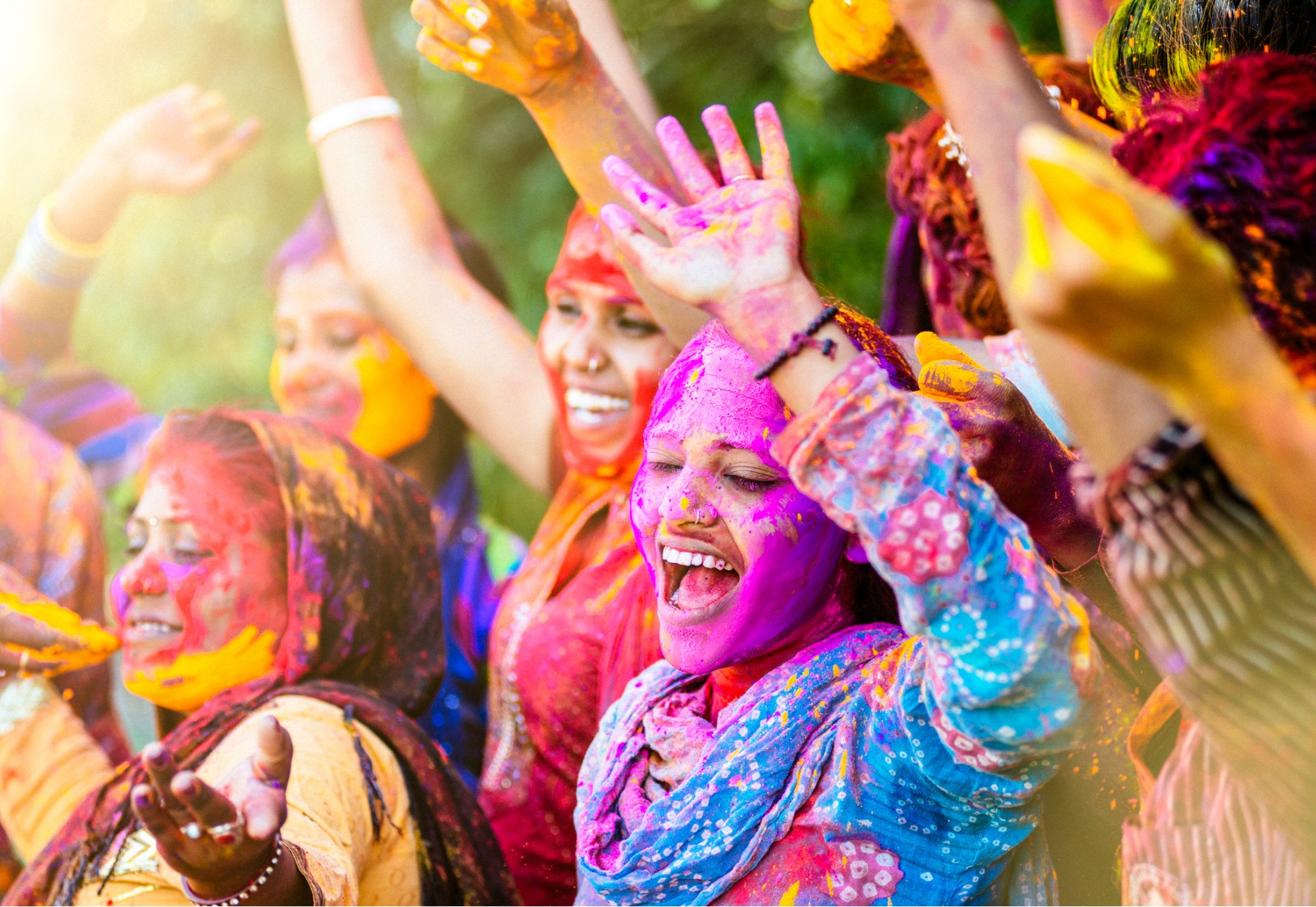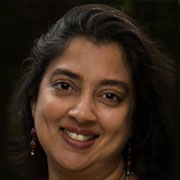A group of young women covered in colorful powder celebrating.
When I hear the word Holi, it brings memories of laughter, fun, friends, family, food and spring. It was so much fun going to neighbor’s houses, throwing balloons filled with colored water and colors on everybody, whether we knew them or not, because “Bura na Mano…Holi Hai” literally translated as “Please don’t mind… it’s Holi!”
Holi is a Hindu festival, and like Diwali, everyone is open to celebrating it. It has a universal theme of new beginnings and triumph of the good. Holi is the first day in the Hindu Lunar Calendar, and so it is New Year’s Day. It falls on a full moon night in Feb/March. In 2021, Holi will fall on March 28th and 29th.
The eve of Holi is called “Holika Dahan.” People gather in temples or their homes to light a bonfire called “Holika.” It signifies the end of evil and the start of the new. The bonfire symbolically burns old misgivings and encourages people to forgive and forget, to pay off old debts, to renew broken relationships, and to make new friends so that everyone can start fresh the next day on Holi.
Holi is also called the festival of colors or Basant Utsav, which means Spring Festival because the main event is a color-filled celebration signifying the beginning of spring. After a fun-filled day of playing with colors, everyone gets together in the evening with family and friends to enjoy festive foods, sweets, and companionship. Houses, temples, and everything is decorated with bright colors, and we dress in glittering jewels and clothing.
Holi is recognized as a national holiday in India. The government of India runs numerous “Holi-special” trains to handle the tourist rush. Now, the whole world, including here in the USA, celebrates the Festival of Colors in some form or the other. It seems that spring, colors, and new beginnings are concepts that connect us all, and that is the beauty of global integration! You can visit https://www.festivalofcolorsusa.com/ to see one example of such a celebration.



